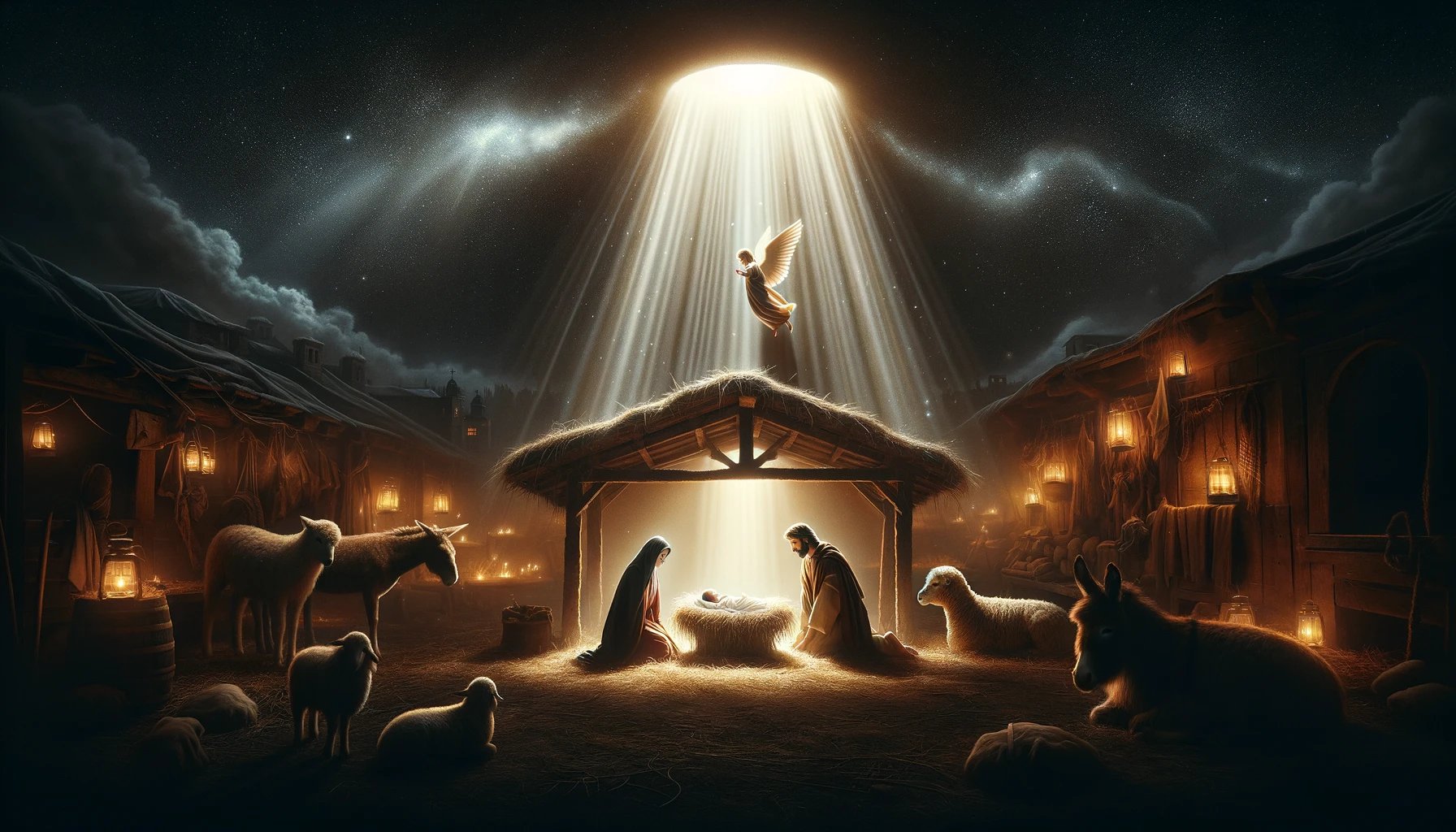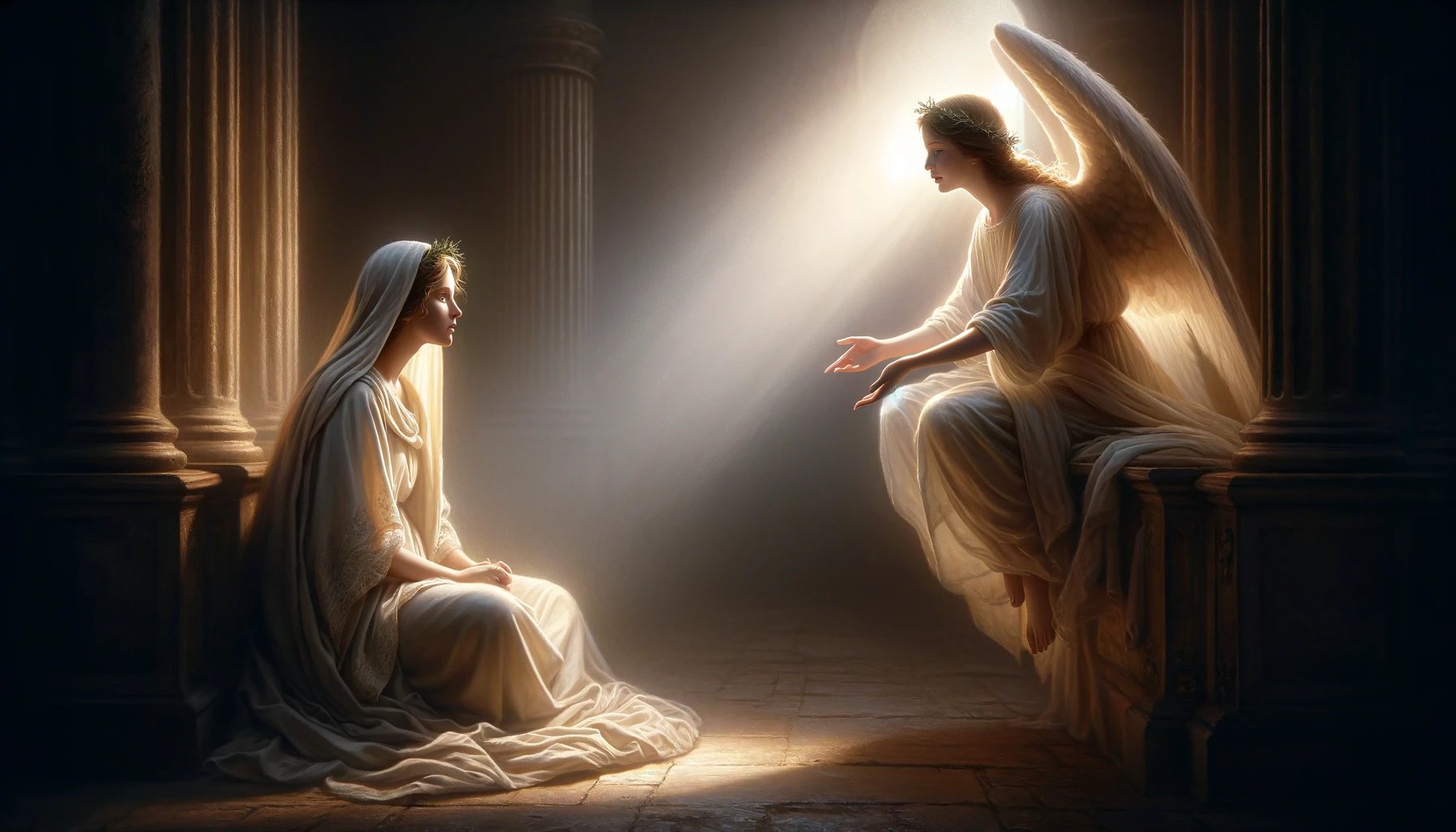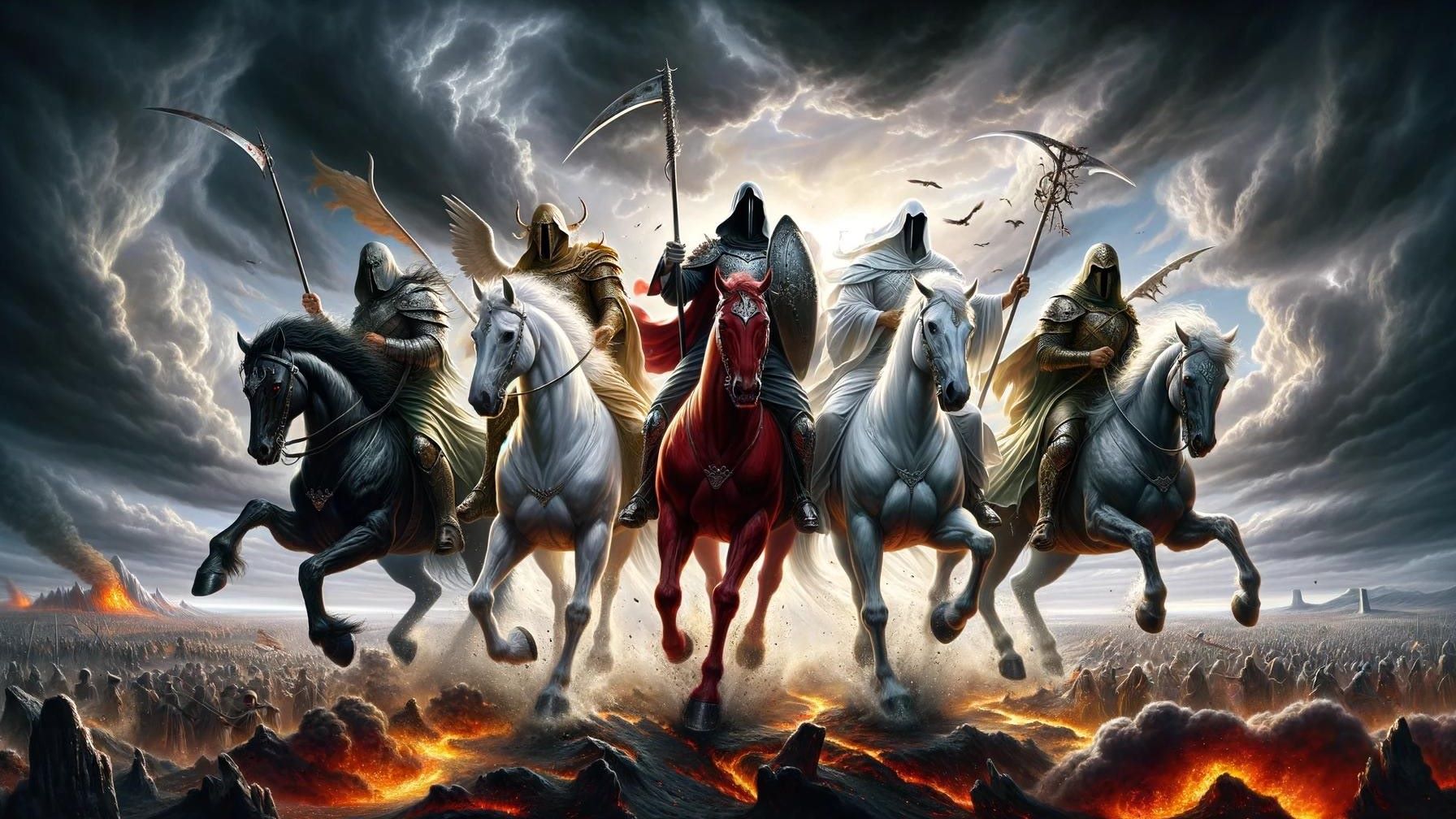Home>Special Themes>When Does Advent Season End


Special Themes
When Does Advent Season End
Published: February 14, 2024
Jason DeRose, Managing Editor at Christian.net, uses his expertise in religion and journalism to deepen understanding of faith's societal impacts. His editorial leadership, coupled with a strong academic background, enriches the platform’s diverse content, earning him recognition in both journalism and religious circles.
Discover when the Advent season ends and the significance of its special themes. Explore the traditions and customs associated with this sacred time.
(Many of the links in this article redirect to a specific reviewed product. Your purchase of these products through affiliate links helps to generate commission for Christian.net, at no extra cost. Learn more)
Table of Contents
Introduction
Advent, a word derived from the Latin "adventus," meaning "coming" or "arrival," marks the beginning of the liturgical year in many Christian traditions. It is a time of anticipation, preparation, and hope as believers await the celebration of the birth of Jesus Christ. The Advent season is a period of spiritual significance, encompassing the four Sundays leading up to Christmas Day. During this time, individuals and communities engage in various customs and observances that symbolize the themes of faith, hope, joy, and peace.
The observance of Advent dates back to the early centuries of Christianity, with its roots in the Western Christian church. Over time, it has become a cherished tradition in many denominations, including Catholic, Protestant, and Orthodox churches. The season serves as a time of reflection and spiritual renewal, inviting believers to contemplate the profound meaning of Christ's incarnation and the promise of his second coming.
As the world is adorned with festive decorations and the air is filled with the sounds of carols, the Advent season stands as a poignant reminder of the deeper spiritual significance of Christmas. It offers a counter-cultural invitation to slow down, embrace simplicity, and cultivate a sense of sacred anticipation amidst the hustle and bustle of the holiday season.
Throughout the centuries, Advent has evolved to encompass a rich tapestry of customs, rituals, and symbols that convey the profound theological truths of the Christian faith. From the lighting of Advent candles to the singing of hymns and the reading of biblical passages, each tradition carries profound meaning and serves as a poignant reminder of the enduring message of hope and redemption.
As we delve into the significance, duration, and culmination of the Advent season, we embark on a journey of exploration and understanding, delving into the timeless traditions and spiritual depth that characterize this sacred time of the year. Join us as we unravel the beauty and meaning of Advent, delving into its rich tapestry of customs and observances that continue to inspire and uplift hearts around the world.
Read more: When Does The Lenten Fast End?
The Meaning of Advent
Advent is a season of profound significance in the Christian calendar, serving as a period of spiritual preparation and anticipation leading up to the celebration of Christmas. Rooted in the Latin word "adventus," which translates to "coming" or "arrival," Advent encapsulates the essence of awaiting the arrival of something momentous and transformative.
At its core, Advent symbolizes the dual nature of the Christian faith – the remembrance of Christ's humble birth in Bethlehem and the hopeful anticipation of his promised return. It is a time of reflection, introspection, and spiritual renewal, inviting believers to delve into the timeless narrative of the Nativity and contemplate the profound implications of the Incarnation.
The Advent season unfolds over the course of four Sundays, each marked by the lighting of a candle on the Advent wreath. These candles represent the themes of hope, peace, joy, and love, serving as poignant reminders of the spiritual journey towards the celebration of Christ's birth. As the weeks progress, the increasing illumination of the candles mirrors the deepening sense of anticipation and the growing radiance of hope in the hearts of believers.
Moreover, Advent is characterized by a sense of longing and expectancy, echoing the sentiments of ancient prophets and the faithful who eagerly awaited the fulfillment of God's promises. It encapsulates the yearning for the arrival of the Messiah, the embodiment of divine love and redemption, whose birth heralded a new era of hope and salvation for humanity.
The observance of Advent extends beyond the confines of religious rituals, permeating the cultural and spiritual fabric of communities worldwide. It serves as a poignant reminder of the enduring message of hope, inviting individuals to embrace the virtues of patience, perseverance, and faith as they navigate the complexities of life.
In essence, Advent encapsulates the essence of the Christian journey – a pilgrimage of the heart marked by the intertwining of remembrance and anticipation, humility and exaltation, and the timeless promise of divine grace. It beckons believers to embark on a spiritual odyssey, embracing the transformative power of hope and the enduring significance of Christ's birth in a humble manger, a profound testament to the boundless love and mercy of the Creator.
As we immerse ourselves in the profound meaning of Advent, we are beckoned to embrace the timeless truths it embodies, weaving a tapestry of faith, hope, and love that transcends the boundaries of time and space, resonating with the deepest longings of the human soul.
The Duration of Advent Season
The Advent season spans a period of four weeks, commencing on the fourth Sunday before Christmas Day. This temporal framework serves as a poignant reminder of the historical and spiritual significance of the Nativity, inviting believers to embark on a journey of anticipation and preparation as they await the celebration of Christ's birth.
The four-week duration of Advent is symbolically represented by the lighting of candles on the Advent wreath, with each candle corresponding to a specific theme. The first candle, often referred to as the "Prophet's Candle," embodies the theme of hope, signifying the anticipation of the Messiah's arrival. The second candle, known as the "Bethlehem Candle," represents peace, evoking the tranquil setting in which the Savior was born. The third candle, the "Shepherd's Candle," symbolizes joy, reflecting the jubilant proclamation of the Good News by the shepherds. Finally, the fourth candle, the "Angel's Candle," embodies love, encapsulating the divine essence of Christ's birth as the ultimate expression of God's love for humanity.
As each Sunday unfolds, a new candle is lit, gradually illuminating the Advent wreath and infusing the surroundings with a sense of growing anticipation and spiritual radiance. This sequential lighting of candles mirrors the progressive revelation of the profound themes of hope, peace, joy, and love, culminating in the resplendent glow of the Christ Candle, which is traditionally lit on Christmas Eve or Christmas Day.
The temporal rhythm of Advent serves as a poignant reminder of the sacred journey towards the celebration of Christ's birth, inviting believers to engage in introspection, prayer, and acts of kindness as they prepare their hearts and homes for the arrival of the Savior. It offers a structured framework for spiritual contemplation and renewal, fostering a sense of connectedness with the timeless narrative of the Nativity and the enduring message of hope and redemption it embodies.
Moreover, the four-week duration of Advent provides a counter-cultural invitation to embrace simplicity and mindfulness amidst the frenetic pace of the holiday season. It encourages individuals to cultivate a spirit of sacred anticipation, transcending the material trappings of Christmas and delving into the profound spiritual significance of the Incarnation.
In essence, the duration of the Advent season, spanning four weeks marked by the sequential lighting of candles, encapsulates the essence of the Christian journey – a pilgrimage of the heart characterized by the intertwining of remembrance and anticipation, humility and exaltation, and the timeless promise of divine grace. It beckons believers to embark on a spiritual odyssey, embracing the transformative power of hope and the enduring significance of Christ's birth, a profound testament to the boundless love and mercy of the Creator.
The End of Advent Season
As the culmination of the Advent season draws near, the air is imbued with a sense of heightened anticipation and spiritual fervor. The journey of preparation and introspection that commenced four weeks earlier now approaches its zenith, heralding the imminent celebration of Christ's birth. The end of Advent signifies the fulfillment of the collective longing and expectancy that have permeated the hearts of believers, culminating in a joyous commemoration of the Nativity.
The final week of Advent, often referred to as the "Week of Love," encapsulates the essence of the season's profound themes, infusing the atmosphere with a palpable sense of spiritual radiance and expectancy. The Advent wreath, adorned with the flickering glow of the first three candles representing hope, peace, and joy, now awaits the illumination of the fourth candle, symbolizing love. This symbolic act serves as a poignant prelude to the resplendent culmination of the Advent journey, evoking a profound sense of unity and anticipation among the faithful.
The culmination of the Advent season is marked by the lighting of the Christ Candle, a central fixture of the Advent wreath that embodies the essence of divine love and redemption. This symbolic gesture serves as a powerful reminder of the transformative power of Christ's birth, illuminating the hearts and minds of believers with the radiant message of hope and salvation. The gentle flicker of the Christ Candle evokes a profound sense of reverence and awe, inviting individuals to contemplate the enduring significance of the Incarnation and the boundless love that it represents.
Moreover, the end of Advent heralds the transition into the joyous celebration of Christmas, a time of jubilation and reverence as believers gather to commemorate the birth of the Savior. The spiritual journey of anticipation and preparation that characterized the Advent season now blossoms into a jubilant celebration of the timeless narrative of the Nativity, infusing hearts with a sense of profound gratitude and reverence for the gift of divine love.
In essence, the end of Advent season represents a sacred threshold, bridging the anticipation of Christ's arrival with the joyous celebration of his birth. It serves as a poignant reminder of the enduring message of hope and redemption, inviting believers to embrace the transformative power of divine love as they embark on the joyous festivities of Christmas. As the Christ Candle casts its luminous glow, the culmination of Advent beckons individuals to immerse themselves in the timeless narrative of the Nativity, embracing the profound significance of Christ's birth as the ultimate expression of God's love for humanity.
Traditions and Celebrations at the End of Advent
As the end of Advent season approaches, communities and families engage in a myriad of traditions and celebrations that embody the profound themes of hope, peace, joy, and love. These customs serve as poignant expressions of faith, unity, and reverence, infusing the atmosphere with a palpable sense of spiritual radiance and anticipation.
One of the most cherished traditions at the end of Advent is the lighting of the Christ Candle, which holds central significance in the Advent wreath. This symbolic act serves as a powerful reminder of the transformative power of Christ's birth, illuminating the hearts and minds of believers with the radiant message of hope and salvation. The gentle flicker of the Christ Candle evokes a profound sense of reverence and awe, inviting individuals to contemplate the enduring significance of the Incarnation and the boundless love that it represents.
In many Christian traditions, the culmination of Advent is accompanied by special church services and liturgical observances that center on the themes of love and anticipation. These services often feature the singing of traditional hymns, the reading of biblical passages that herald the birth of Christ, and the collective lighting of candles, creating a sacred ambiance that fosters a sense of unity and spiritual connectedness among worshippers.
Families and communities also partake in various festive activities and gatherings to mark the end of Advent. From intimate gatherings around the Advent wreath to communal prayer services and musical performances, these celebrations serve as poignant reminders of the enduring message of hope and redemption. The exchange of heartfelt greetings, acts of charity, and expressions of gratitude further enrich the tapestry of traditions, infusing the season with a spirit of joy and goodwill.
Moreover, the transition from Advent to Christmas is often accompanied by the decoration of homes and churches with symbols of the Nativity, including nativity scenes, Christmas trees, and festive ornaments. These visual expressions serve as tangible reminders of the profound significance of Christ's birth, evoking a sense of reverence and wonder as believers immerse themselves in the timeless narrative of the Nativity.
As the end of Advent gives way to the joyous festivities of Christmas, the traditions and celebrations that characterize this sacred time serve as a testament to the enduring legacy of faith, hope, and love. They invite individuals to embrace the transformative power of divine love, fostering a spirit of unity and reverence as they embark on the jubilant commemoration of the Savior's birth.
In essence, the traditions and celebrations at the end of Advent embody the timeless themes of faith, hope, and love, weaving a tapestry of customs and observances that resonate with the deepest longings of the human soul. They serve as poignant expressions of the enduring message of the Nativity, infusing hearts with a sense of profound gratitude and reverence for the gift of divine love.
Read more: What Is The Advent Season?
Conclusion
The culmination of the Advent season represents a sacred threshold, bridging the anticipation of Christ's arrival with the joyous celebration of his birth. As the Christ Candle casts its luminous glow, the culmination of Advent beckons individuals to immerse themselves in the timeless narrative of the Nativity, embracing the profound significance of Christ's birth as the ultimate expression of God's love for humanity. The traditions and celebrations that characterize this sacred time serve as a testament to the enduring legacy of faith, hope, and love, inviting individuals to embrace the transformative power of divine love as they embark on the joyous festivities of Christmas.
As the end of Advent gives way to the joyous festivities of Christmas, the traditions and celebrations that characterize this sacred time serve as a testament to the enduring legacy of faith, hope, and love. They invite individuals to embrace the transformative power of divine love, fostering a spirit of unity and reverence as they embark on the jubilant commemoration of the Savior's birth. The gentle flicker of the Christ Candle evokes a profound sense of reverence and awe, inviting individuals to contemplate the enduring significance of the Incarnation and the boundless love that it represents.
In essence, the traditions and celebrations at the end of Advent embody the timeless themes of faith, hope, and love, weaving a tapestry of customs and observances that resonate with the deepest longings of the human soul. They serve as poignant expressions of the enduring message of the Nativity, infusing hearts with a sense of profound gratitude and reverence for the gift of divine love. The end of Advent season represents a sacred threshold, bridging the anticipation of Christ's arrival with the joyous celebration of his birth. It serves as a poignant reminder of the enduring message of hope and redemption, inviting believers to embrace the transformative power of divine love as they embark on the joyous festivities of Christmas.
As the Christ Candle casts its luminous glow, the culmination of Advent beckons individuals to immerse themselves in the timeless narrative of the Nativity, embracing the profound significance of Christ's birth as the ultimate expression of God's love for humanity. The gentle flicker of the Christ Candle evokes a profound sense of reverence and awe, inviting individuals to contemplate the enduring significance of the Incarnation and the boundless love that it represents.














